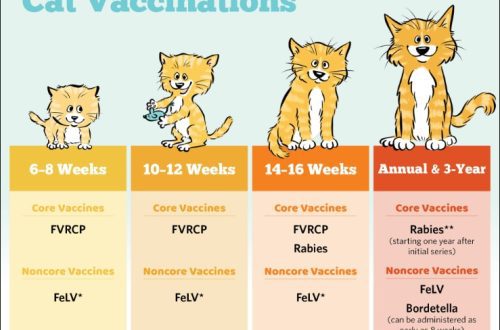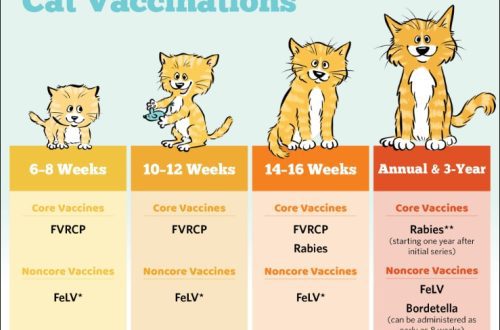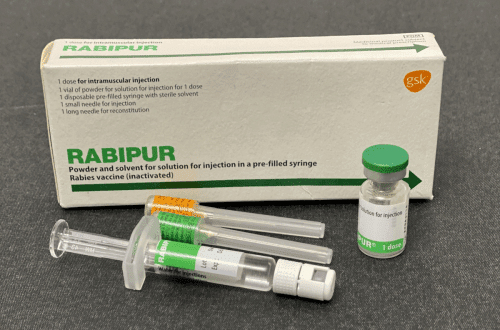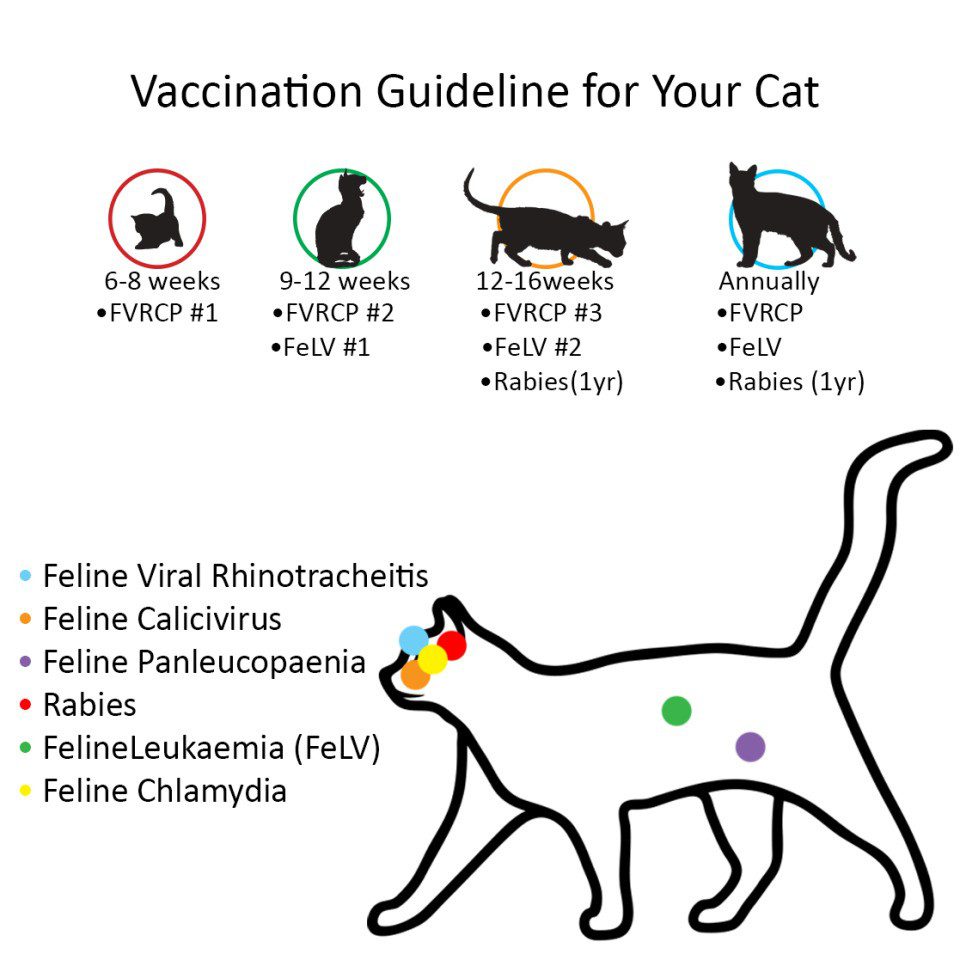
Side effects in cats after vaccination against rabies and other diseases
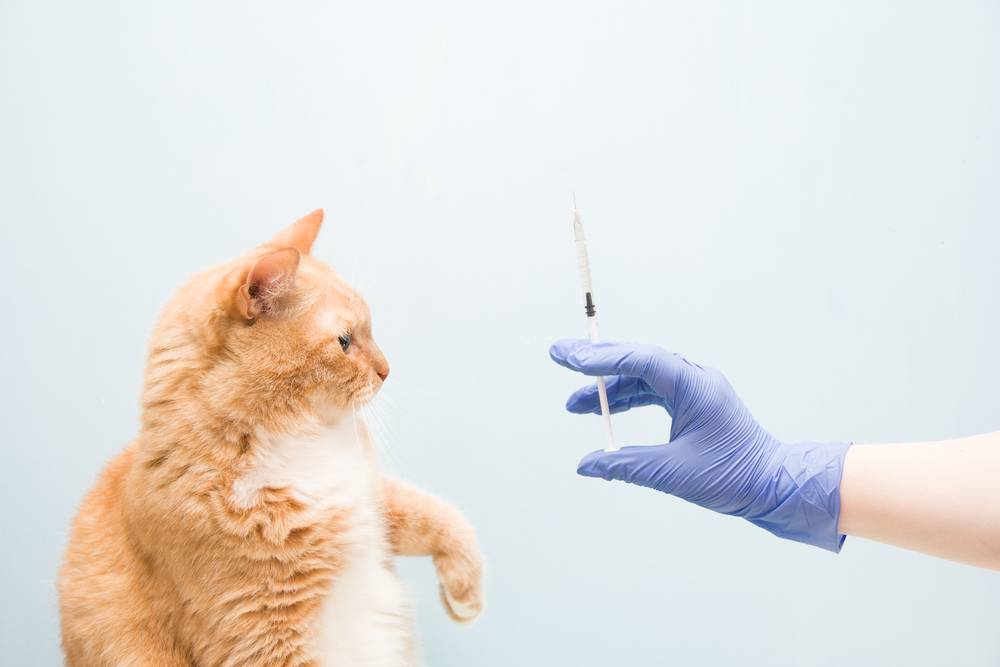
Contents
Why vaccinate an animal
Despite advances in medicine and science, there are currently no true antiviral drugs that target a specific virus and destroy it as bacteria do. Therefore, in the treatment of viral diseases, prevention is the best treatment! To date, vaccination is the only reliable way to avoid infectious diseases and the complications they cause. If the pet is not vaccinated, it will be at risk for infectious diseases and can get sick at any stage of life, which is fraught with a deterioration in the quality and quantity of the pet’s life, financial costs for therapy and moral worries during the period of treatment and rehabilitation.
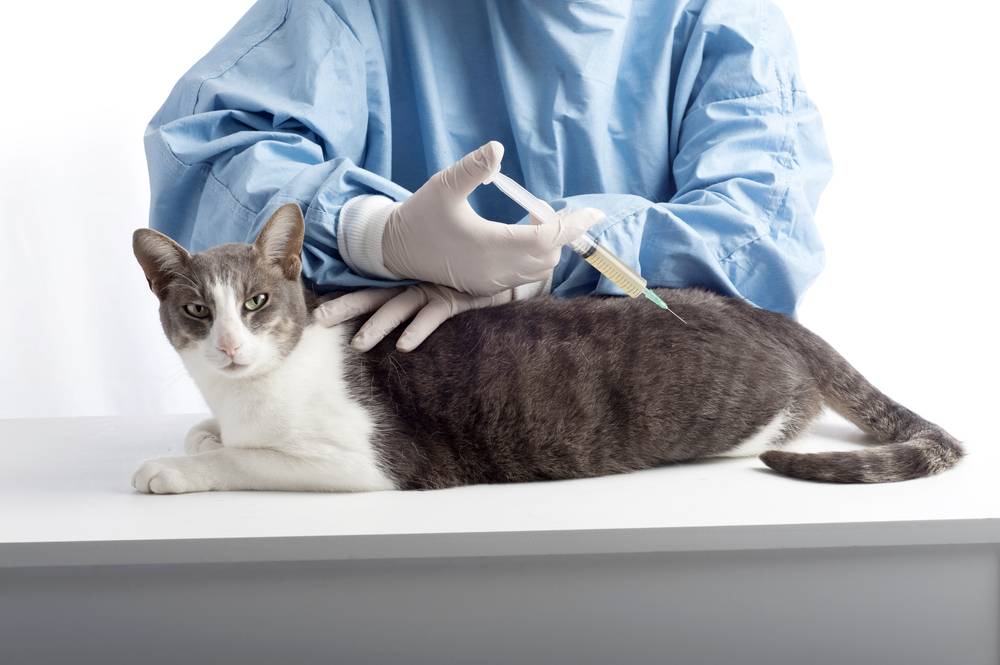
What diseases are cats vaccinated against?
Cats are vaccinated against the following diseases: rabies, feline panleukopenia, feline herpes virus infection, feline calicivirus infection, chlamydia, bordetellosis, and feline leukemia virus. It should be noted that the basic (recommended) vaccines for cats are vaccines against rabies, panleukopenia, herpes virus and calicivirus. Additional (used by choice) include vaccinations against chlamydia, bordetellosis and feline viral leukemia.
Rabies
A deadly viral disease of animals and humans caused by the rabies virus after being bitten by an infected animal, characterized by severe damage to the central nervous system and ending in death. In our country, the requirements of the legislation provide for mandatory vaccination against rabies, and, in addition, it is required for international travel with pets. The first vaccination is carried out at the age of 12 weeks, a year later – revaccination, then – once a year for life.
The cat may feel ill after the rabies vaccination, but this reaction is acceptable and resolves within a day.
Feline Panleukopenia (FPV)
A highly contagious viral disease of cats characterized by damage to the gastrointestinal tract. Mostly animals under one year old are ill. Has a high mortality among kittens up to 6 months. The virus is transmitted through the animal’s natural secretions (vomit, feces, saliva, urine). Recommended vaccination schedule: first – at 6-8 weeks, then – every 2-4 weeks until the age of 16 weeks, revaccination – once every 1 year, then – no more than 1 time in 3 years. Females should be vaccinated before, not during, pregnancy.
Feline herpes virus infection (rhinotracheitis) (FHV-1)
Acute viral disease of the upper respiratory tract and conjunctiva of the eyes, characterized by sneezing, nasal discharge, conjunctivitis. Mostly young animals are affected. Even after recovery, it remains in the body for many years in a latent (hidden) form; during stress or weakened immunity, the infection is reactivated. Recommended vaccination schedule: first – at 6-8 weeks, then – every 2-4 weeks until the age of 16 weeks, revaccination – once a year. Then for cats with a low risk of infection (domestic cats with no walking and no contact), vaccination is allowed once every 1 years. Cats with an increased risk of infection (cats on their own, show animals, individuals involved in breeding, etc.) are recommended to be vaccinated annually.

Feline calicivirus (FCV)
An acute, highly contagious infectious disease of cats, predominantly manifested by fever, runny nose, eyes, mouth ulcers, gingivitis, and in the case of an atypical course of the disease, there may be lameness. In some cases, systemic calicivirus can develop, which has a high mortality rate in affected cats. Recommended vaccination schedule: first – at 6-8 weeks, then – every 2-4 weeks until the age of 16 weeks, revaccination – once a year. Then for cats with a low risk of infection, vaccination once every 1 years is acceptable. Cats at higher risk of infection are recommended to be vaccinated annually.
Feline Leukemia Viral (FeLV)
An extremely dangerous disease that affects the immune system of cats, leads to anemia, can cause tumor processes in the intestines, lymph nodes (lymphoma). Vaccination against feline leukemia virus is optional, but its use is determined by the lifestyle and perceived risks to which each individual cat is exposed. Since the leukemia virus is transmitted through saliva through scratches and bites, cats that have access to the street or live with animals that have access to the street, as well as those who are involved in breeding, are extremely important to vaccinate. The first vaccination is administered at the age of eight weeks, revaccination – after 4 weeks and then – 1 time per year. Only FeLV-negative animals should be vaccinated, i.e., before vaccination, it is necessary to pass an analysis for feline leukemia virus (rapid test and PCR).
What vaccines are there
There are various types of vaccines on our market. The most common of these are modified live vaccines: Nobivac Tricat Trio/Ducat/Vv, Purevax RCP/RCPCh/FeLV, Feligen RCP and the inactivated (killed) domestic vaccine Multifel.
Nobivac (Nobivac)
Dutch vaccine company MSD, which is available in several versions:
Nobivac Tricat Trio is a modified live vaccine (MLV) against panleukopenia, herpes virus and calicivirus;
Nobivac Ducat – MZhV from the herpes virus and calicivirus;
Nobivac Vv – MZhV from feline bordetellosis;
Nobivac Rabies is an inactivated rabies vaccine.
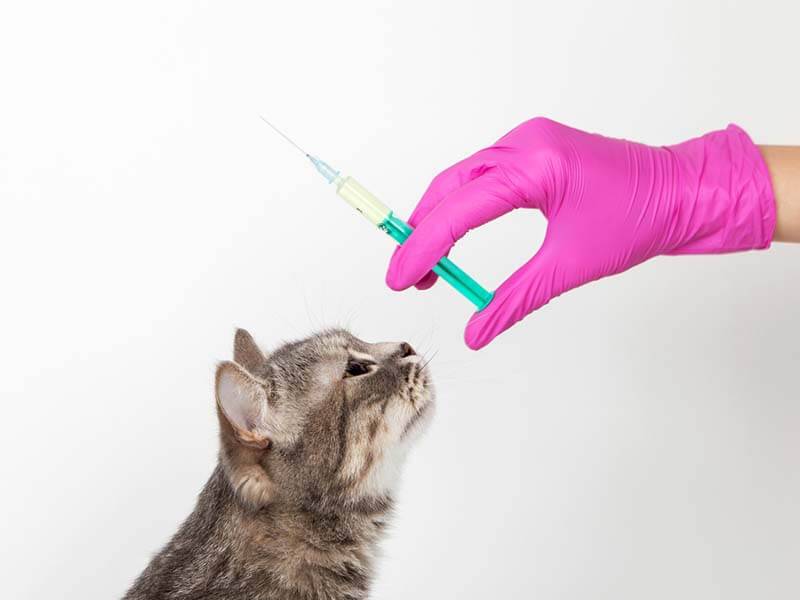
Purevax
The French vaccine from Boehringer Ingelheim (Merial), which does not contain an adjuvant (immune response enhancer), according to the recommendations of veterinary associations, and is available on the market in several versions:
Purevax RCP – MZhV from panleukopenia, herpes virus and calicivirus;
Purevax RCPCh – MZhV for panleukopenia, herpes virus, feline calicivirus and chlamydia;
Purevax FeLV is the only vaccine on the Russian market against feline viral leukemia.
Rabizin
French rabies vaccine from Boehringer Ingelheim (Merial), inactivated, non-adjuvanted.
Feligen CRP/R
Virbac French vaccine for the prevention of calicivirus, rhinotracheitis and panleukopenia in cats, the second component of the vaccine is an attenuated (weakened) rabies vaccine.
Multikan 4
This is a domestic inactivated vaccine against calicivirus, rhinotracheitis, panleukopenia and chlamydia in cats.
In what cases it is impossible to vaccinate
Vaccination is carried out only in clinically healthy animals, so any symptoms (fever, vomiting, diarrhea, discharge from the nose and eyes, sneezing, mouth ulcers, general malaise, refusal to eat, etc.) are a contraindication to vaccination. Do not vaccinate animals that receive immunosuppressive therapy (cyclosporine, glucocorticosteroids, chemotherapy drugs), the interval between the last dose of the drug and vaccination should be at least two weeks. To avoid disorders of the central nervous system (cerebellar damage – cerebellar ataxia), it is strictly forbidden to vaccinate kittens before 6 weeks of age with the Feline Panleukopenia (FPV) vaccine. Pregnant cats should not be vaccinated with a modified live feline panleukopenia vaccine, as there is a risk of transmission of the virus to the fetus and the development of fetal pathologies in them. Live vaccines should not be vaccinated in severely immunocompromised cats (eg, feline leukemia virus or viral immunodeficiency), as loss of control over virus replication (“multiplication”) may result in clinical symptoms following vaccination.
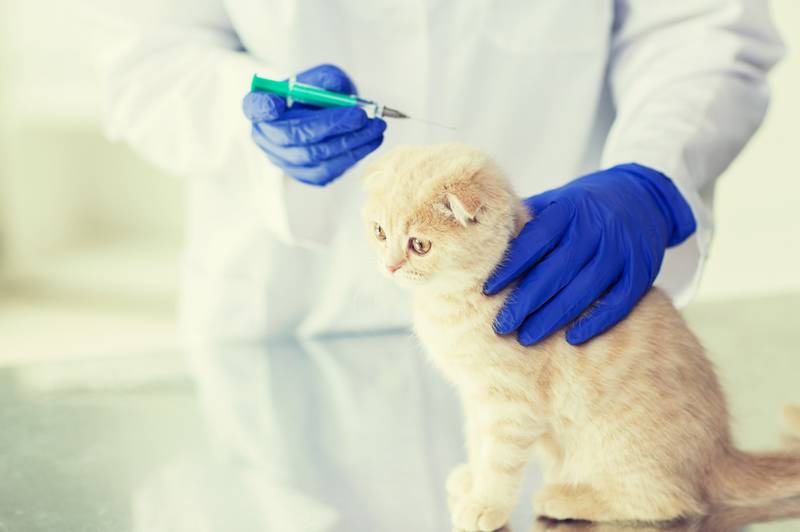
Well-being and the normal reaction of a cat to vaccinations
Modern vaccines are quite safe, and adverse reactions from them are extremely rare. Normally, subject to all vaccination rules, which include a mandatory examination of the animal by a veterinarian, anamnesis and an individual approach, the cat’s well-being after vaccination does not change, the appearance of a bump at the injection site is acceptable. Also, the behavior of the kitten after vaccination most often remains the same, but in rare cases the baby is slightly lethargic.
A cat after vaccination against rabies may be lethargic for the first day, a slight and short-term increase in body temperature is acceptable, a bump may appear at the injection site for several days.
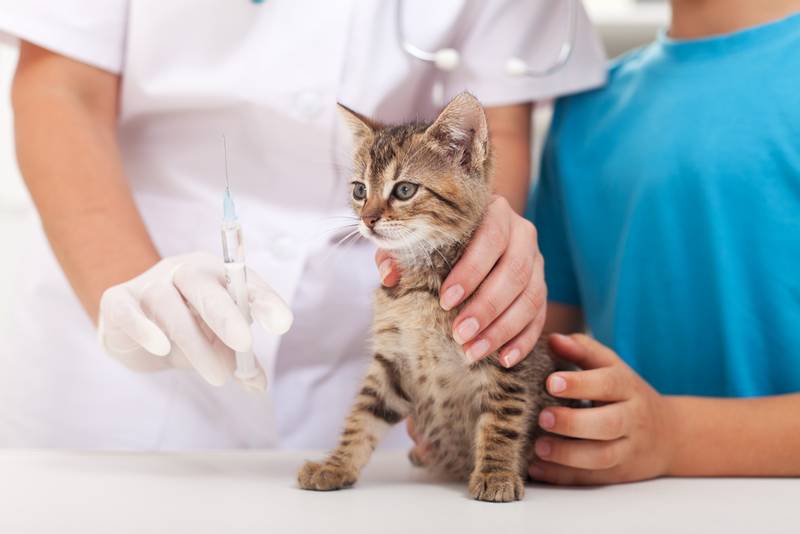
Reactions and complications after vaccinations in cats
Postinjection fibrosarcoma
This is a very rare complication after vaccination in cats. Its cause is the introduction of any drug subcutaneously, including a vaccine. It can cause local inflammation (a lump in the place after vaccination) and, if this inflammation does not go away, it can turn into chronic, and then into a tumor process. It has been proven that the type of vaccine, its composition, the presence or absence of an adjuvant does not affect the likelihood of post-injection fibrosarcoma, but, to a greater extent, the temperature of the injected solution affects. The colder the solution before administration, the greater the risk of developing local inflammation, the appearance of a bump after vaccination, the transition to chronic inflammation, and therefore the higher the risk of developing a tumor process. If within a month the lump after vaccination in a cat does not resolve, it is recommended to surgically remove this formation and send the material for histology.
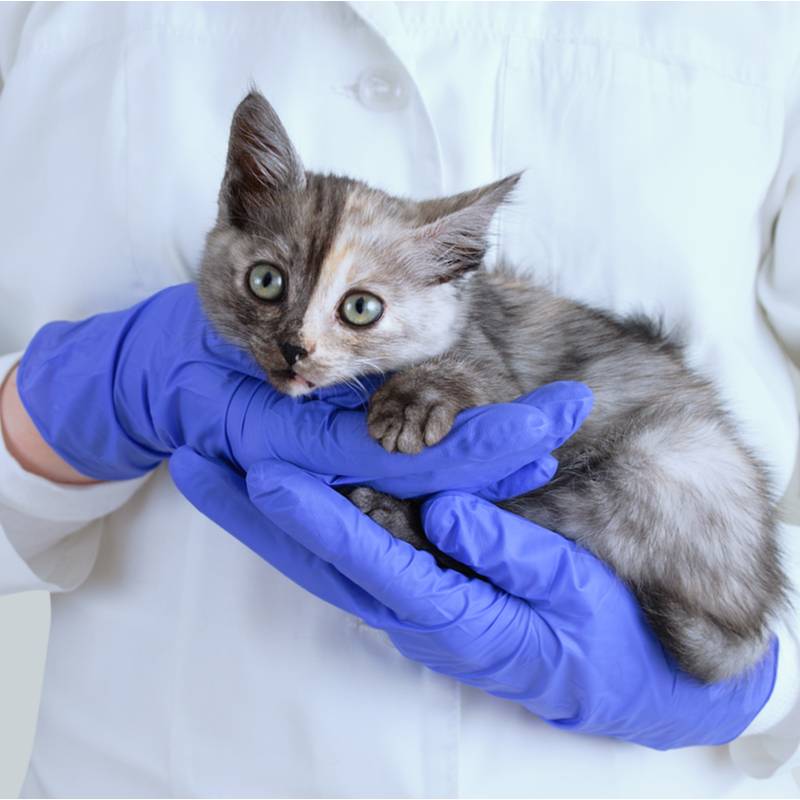
Lethargy, loss of appetite
These symptoms can be observed in kittens and adult cats, but these reactions are not directly related to vaccination. If, after vaccination, the cat is lethargic for no more than a day or does not eat well, this is due to stress after visiting the clinic and the manipulation itself, rather than with a reaction to the drug. If the kitten is sluggish and does not eat well for more than a day after vaccination, then to find out the possible reasons, it is worth showing it to a veterinarian.
Vomiting
Also, if the cat vomits after vaccination, a visit to the veterinarian is necessary, as this may be a symptom of some disease of the gastrointestinal tract and has nothing to do with the recent vaccination.
Lameness
It can be observed in a kitten after the vaccine is administered if it was injected into the muscles of the thigh. This condition usually resolves within a day. In some cases, when the drug enters the sciatic nerve, prolonged lameness on the pelvic limb, paralysis can be observed. In this case, it is recommended to show the pet to a specialist.
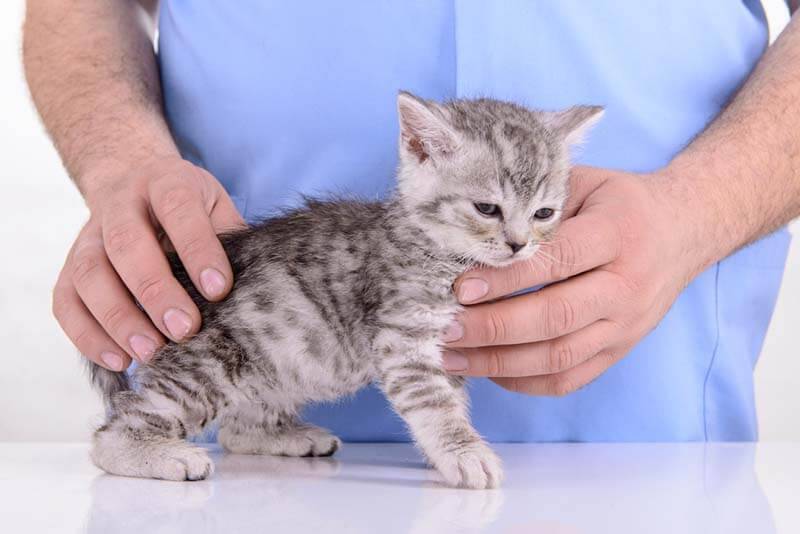
Development of an infectious disease after vaccination
The most common reason that a kitten becomes ill after a vaccination is that the animal was already infected before it and was in the incubation period when there are no symptoms yet.
Temporary increase in body temperature
This symptom after vaccination is a minor adverse reaction and is most often temporary (several hours after vaccination). But if the cat is ill within a day after vaccination, a high temperature persists, it is necessary to show it to a veterinary specialist.
Cutaneous vasculitis
This is an inflammatory disease of the blood vessels of the skin, characterized by redness, swelling, hyperpigmentation, alopecia, ulcers and crusts on the skin. This is a very rare adverse reaction that can occur after a rabies vaccination.
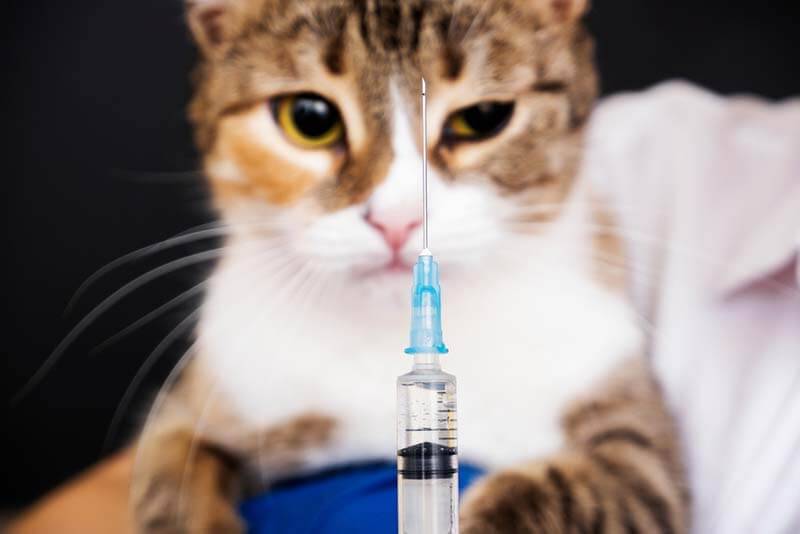
Type I hypersensitivity
These are various skin allergic reactions: swelling of the muzzle, skin itching, urticaria. Can be caused by any kind of vaccine. This complication refers to reactions of the rapid type and usually manifests itself within the first hours after vaccination. This allergic reaction, of course, carries certain risks, but with timely detection and assistance, it quickly passes. It is known that the predominant antigen that causes these reactions is bovine serum albumin. It gets into the vaccine during its production. In modern vaccines, the concentration of albumin is significantly reduced and, accordingly, the risks of adverse reactions are also reduced.
Answers to frequently asked questions
November 12, 2021
Updated: November 18, 2021



